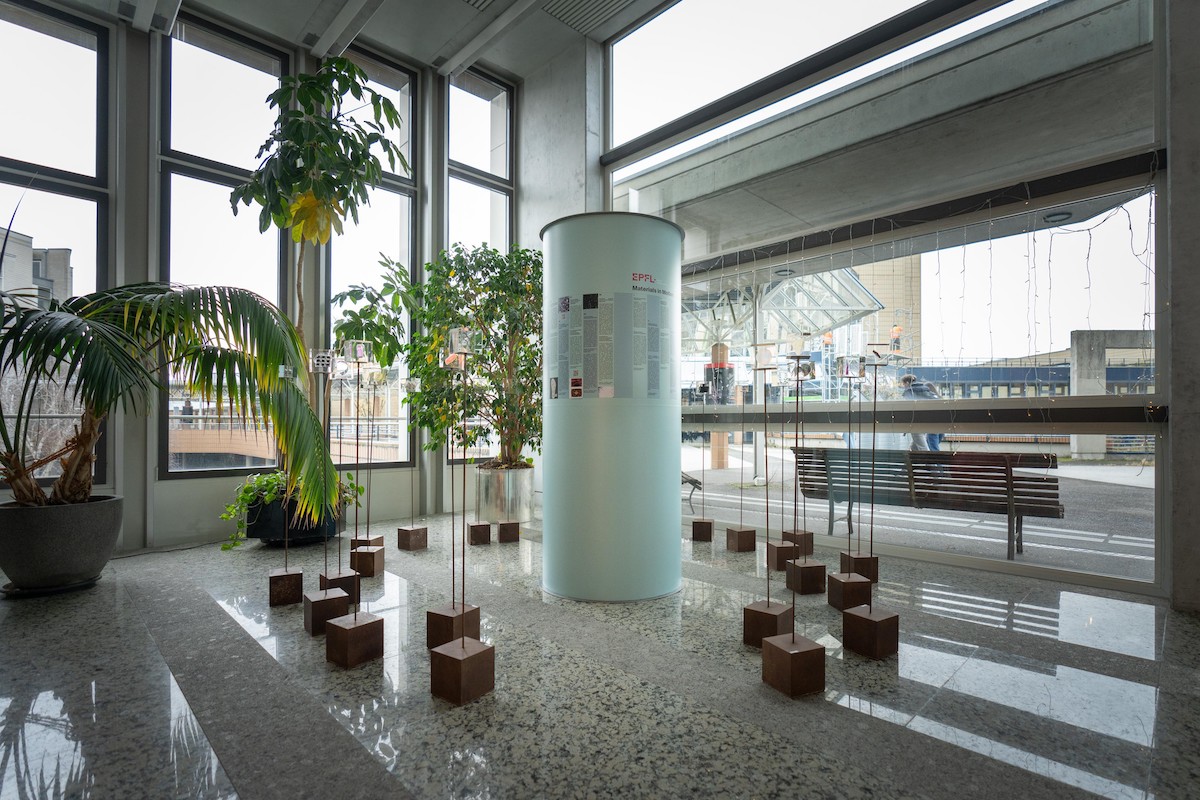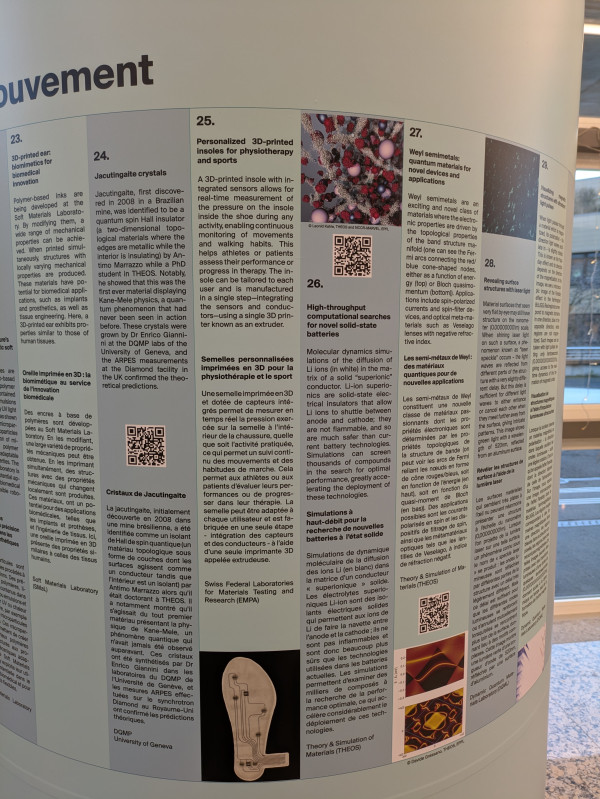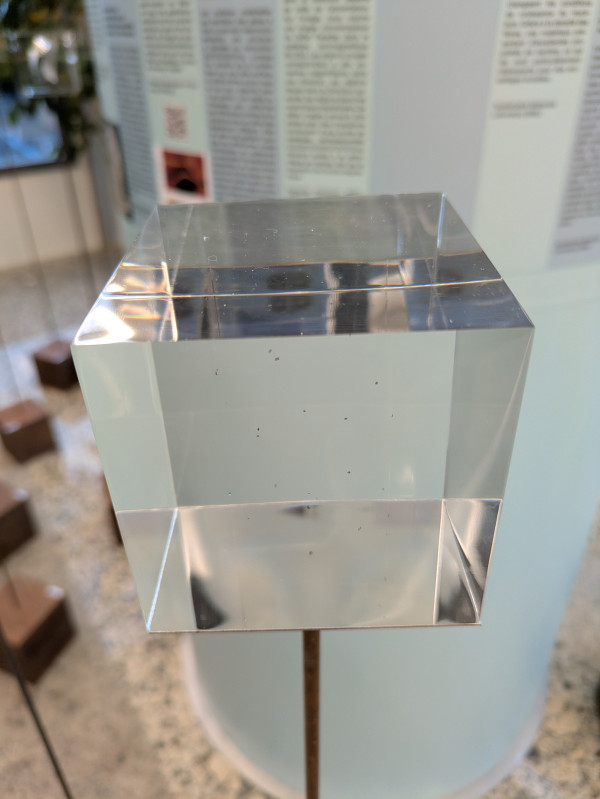Materials science is on display on the EPFL campus
Innovative materials have their own permanent exhibition at EPFL in Lausanne, where the installation Materials in Motion can be visited in the entryway of the EPFL campus's MXF building.
The installation, inaugurated in November, is the work of artists Étienne Krähenbühl and Alban Kakulya, and aims to present important engineering materials in an original and compelling way. It consists of a 'field' of materials (from crystals to perovskite solar cells and thermally drawn functional fibers, and from 3D-printed metals to dispersed microparticles, each with an explanation of the ongoing research surrounding it) encased within resin blocks mounted on metal rods arranged around a central column, and accompanied by explanatory texts.
"We had the idea to make a connection between the words "field of study", as when we think of a field, we usually think of a wheat field and the stems that move with the wind. So we had the idea to arrange the materials developed at EPFL like a field of wheat, and to place them at the top of these metal 'stems'," Kakulya said at the inauguration.

MARVEL supported the installation and has contributed samples materials and contents. In particular, the THEOS lab at EPFL contributed a section on high-throughput computational searches for novel solid-state batteries, showcasing molecular dynamics simulations of the diffusion of Li ions in the matrix of a solid “superionic” conductor. Simulations can screen thousands of compounds in the search for optimal performance, greatly accelerating the deployment of these technologies.
Another block shows Weyl semimetals, an exciting and novel class of materials where the electronic properties are driven by the topological properties. Applications include spin-polarized currents and spin-filter devices, and optical meta-materials such as Veselago lenses with negative refractive index.
Jacutingaite crystals are also on display, telling the story of this material that was first discovered in 2008 in a Brazilian mine, and was identified to be a quantum spin Hall insulator (a two-dimensional topological materials where the edges are metallic while the interior is insulating) by Antimo Marrazzo while a PhD student in THEOS. These crystals were grown by Dr Enrico Giannini at the DQMP labs of the University of Geneva, and the ARPES measurements at the Diamond facility in the UK confirmed the theoretical predictions.


Low-volume newsletters, targeted to the scientific and industrial communities.
Subscribe to our newsletter